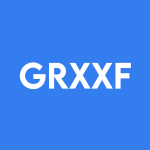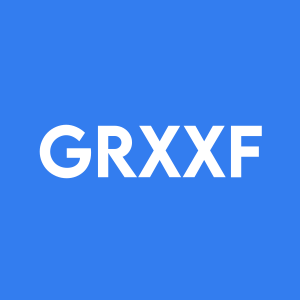Welcome to our dedicated page for Critical Reagents Processing news (Ticker: GRXXF), a resource for investors and traders seeking the latest updates and insights on Critical Reagents Processing stock.
Critical Reagent Processing Corp (GRXXF) delivers essential soda ash for battery-grade lithium production through its Mina Laguna Santa Maria operations in Argentina. This dedicated news hub provides investors and industry stakeholders with timely updates on the company’s mining activities, technical developments, and strategic partnerships.
Access authoritative reports on resource evaluations, processing innovations, and market positioning within the lithium supply chain. Our curated collection includes earnings announcements, operational milestones, and regulatory filings – all critical for understanding this key reagent supplier’s role in sustainable battery manufacturing.
Content spans three primary areas: mining concession updates from Salta Province, lithium industry partnerships, and technical process optimizations. Regular updates ensure stakeholders maintain current awareness of supply chain developments impacting battery material production.
Bookmark this page for streamlined access to GRXXF’s evolving role in the energy transition sector. Verify operational timelines and strategic decisions through primary-source documentation, updated as new information becomes available from company filings.
Critical Reagent Processing Corp. (CSE: CRPC) (OTC: GRXXF) has contracted Groundwater Insight and Tuareg Geological Services to evaluate the Laguna Santa Maria Project, a natural sodium carbonate (soda ash) deposit in Salta Province, Argentina. The project's strategic location is significant for the developing lithium industry in the region, as approximately two tonnes of soda ash are required to produce one tonne of battery grade lithium carbonate.
The evaluation program includes:
- Reinterpretation of Vertical Electric Sounding (VES) data
- Review of water and sediment chemistry data
- Project site visit for brine and sediment sampling
- Construction of a project database
Oz Lithium Corporation (CSE: OZLI, OTC: GRXXF) announced a Purchase Option Agreement for the Mina Laguna Santa Maria project in Salta, Argentina. The project covers 500 hectares and is licensed for sodium carbonate production, essential for lithium carbonate manufacturing. Close to existing lithium operations, the project holds significant logistical advantages. Given the insufficient local supply of soda ash in Argentina, the project presents a crucial opportunity for the expanding lithium industry. The acquisition costs total US$250,000. With over US$3 million in funding, the Company is equipped to expedite project evaluation, with sample results anticipated shortly.
Oz Lithium Corporation (OTC: GRXXF) announced exploration progress at the Nortia Project in Pilbara, Western Australia. A multispectral satellite imagery program completed by Perry Remote Sensing identified areas that may host lithium-bearing minerals, including lepidolite and spodumene. The project spans 5,510 hectares near Nullagine, with previous sampling indicating lithium values between 8.3 ppm and 74.1 ppm. A ground program is scheduled to start this month to confirm exploration targets based on the satellite data.
On May 11, 2022, Australian Goldfields Limited (OTC: GRXXF) announced its intention to change its name to Oz Lithium Corporation to better reflect its focus on lithium exploration. The company holds three tenements in the Pilbara Region of Western Australia, with promising lithium potential. Notably, the Nortia Project covers 5,510 hectares with lithium values ranging from 8.3 ppm to 74.1 ppm. The upcoming activities include soil sampling and ongoing LANDSAT programs to further assess lithium resources.
Australian Goldfields Limited (OTC: GRXXF) has announced an exploration update for its Nortia Project and Cuprite Projects in Pilbara, Western Australia. The company has engaged Perry Remote Sensing, LLC to conduct a digital satellite analysis to identify potential mineral targets for future ground programs. The analysis aims to model surface exposures for pegmatite indicators and enhance the detection of fault zones using high-resolution satellite imagery. This follows the region's growing significance in lithium production since 2017.


